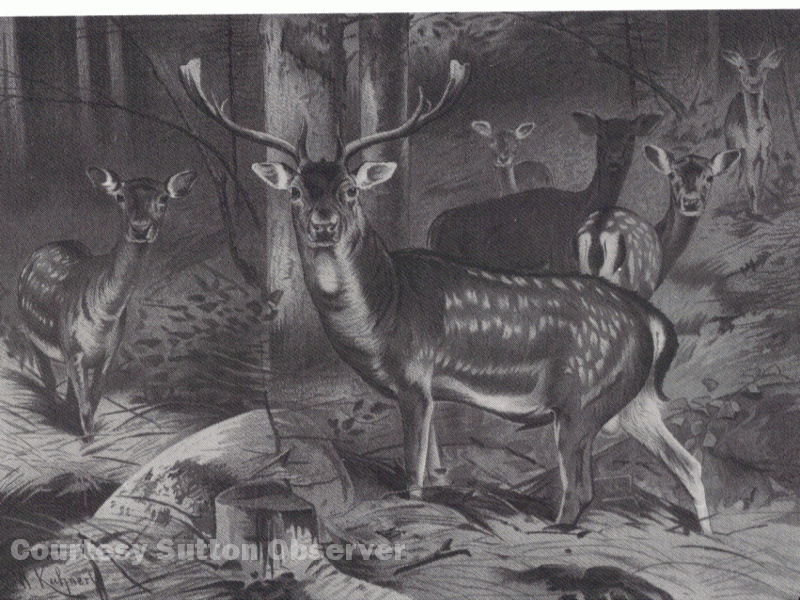King Henry the First was keen on hunting, riding through the many forests created in England by his grandfather, William the Conqueror. His favourite food was venison, the meat of the fallow deer. Hunting in the vast forests did not always produce enough venison, and so special areas were made where the fallow deer could be protected - these were deer parks. The first deer park in England was created at Woodstock in the year 1100 by Henry I.
At that time Sutton Coldfield was a royal manor, lying within the boundaries of the Forest of Kank. When King Henry gave Sutton to the Earl of Warwick in 1126, he included a large section of the Forest of Kank. As a special favour, since only royalty were allowed to have venison for dinner, the Earl was to have a deer park with eighteen fallow deer. Forests included all kinds of country - woods, fields, open commons and villages - subject to strict laws designed to preserve the game animals for the King. Only kings were allowed to have Forests; when the Earl of Warwick became the owner of the part of the Forest of Kank bounded by the River Tame and extending north to Shenstone and west to Walsall, it became known as Sutton Coldfield Chase, although the strict forest laws still applied.
The deer park was very different from the chase. It had a high fence all round its seven-mile boundary to keep the deer in, and included no cultivated land, just woods, moors, marshes and rough grassland. The park at Woodstock had a lake, so pools were made in Sutton Park - by good fortune the views we see in Sutton Park today are very much like what the Earl of Warwick saw 900 years ago, except for the deer.
The deer park flourished - deer from Sutton Park were sent to Alvechurch to re-stock the Bishop of Worcester’s park there in the thirteenth century, and in 1433 the Bailiff sent off twelve fat bucks to the cook at the Earl of Warwick’s court. The Chase was also active, with hunting recorded in 1477, and the chase laws were enforced in the Sutton courts, where people were fined for obstructing the game or taking the fruits of the forest for sale.
All this came to an end in 1528, when Bishop Vesey dissolved the Chase, got rid of the deer, and the deer park became the Sutton Park of today.
